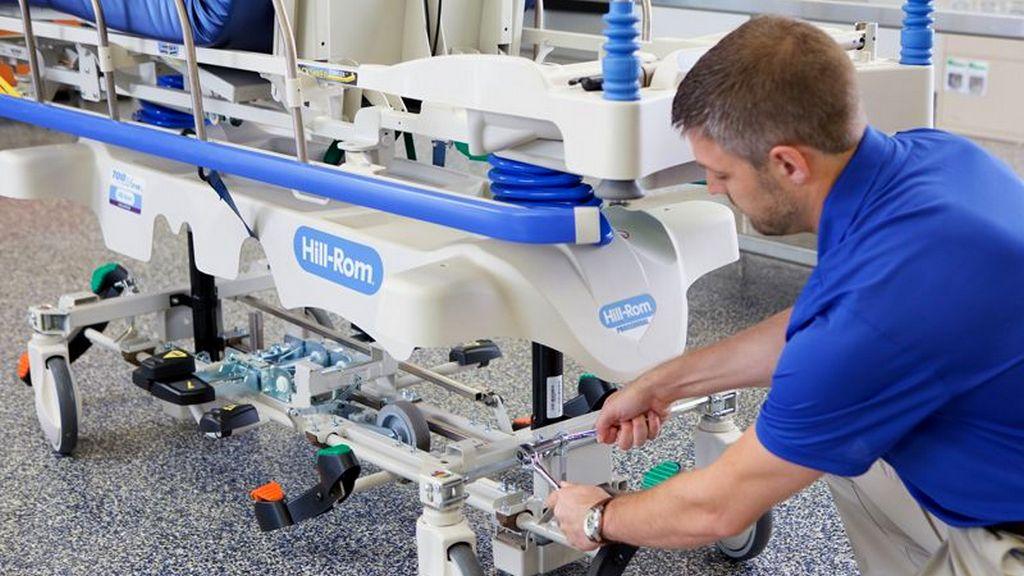
Are you aware of how crucial hospital bed repair and hospital bed maintenance are in ensuring patient comfort and functionality?
Proper care and upkeep of hospital beds not only enhance patient well-being but also ensure the longevity and efficiency of the equipment. Learn the significance of maintaining and repairing hospital beds, offering valuable insights to help you manage these essential medical devices.
The Importance of Hospital Bed Repair
Hospital beds are integral to patient care, providing necessary support and comfort. However, like any mechanical equipment, they are prone to wear and tear. Hospital bed repair is crucial to address issues compromising functionality or patient safety.
Common problems include malfunctioning motors, broken side rails, and damaged mattresses. Timely repairs can prevent minor issues from escalating into major problems, ensuring continuous and safe usage.
Common Issues Requiring Repair
- Malfunctioning Motors: The motor system in adjustable beds can fail, making it difficult to change bed positions.
- Broken Side Rails: These are vital for patient safety, and any damage needs immediate attention.
- Damaged Mattresses: Tears or flattening of the mattress can lead to discomfort and pressure sores for patients.
Benefits of Timely Repairs
- Enhanced Safety: Regular repairs reduce the risk of accidents and injuries.
- Improved Comfort: Addressing mattress and structural issues promptly ensures patients remain comfortable.
- Cost Savings: Early repairs can prevent the need for costly replacements.
Hospital Bed Maintenance: Keeping Your Equipment in Top Shape
Preventative hospital bed maintenance is as important as repairs. Regular maintenance ensures beds function optimally and reduces the likelihood of unexpected breakdowns. Here are some key maintenance practices:
Regular Inspection
Frequent inspections can help identify potential problems before they become serious. Check for loose bolts, worn-out components, and electrical issues.
Cleaning and Sanitization
Given the environment of hospital beds, keeping them clean and sanitized is essential. Regular cleaning prevents bacteria buildup and extends the bed’s lifespan.
Lubrication of Moving Parts
Lubricate the moving parts of the bed regularly to ensure smooth operation. This reduces friction and wear, maintaining the bed’s functionality.
Electrical System Check
Inspect the bed’s electrical system to ensure all components are working correctly. Look for signs of wear in cables and connectors, and replace any damaged parts.
Best Practices for Hospital Bed Care
Implementing best practices in hospital bed care can significantly enhance their performance and lifespan. Here are some tips to consider:
Training Staff
Ensure that all healthcare staff are trained in properly using and maintaining hospital beds. This reduces the risk of misuse and subsequent damage.
Scheduled Maintenance
Create a maintenance schedule to inspect and service the beds regularly. This proactive approach helps identify issues early and address them promptly.
Use Quality Parts
When repairing or maintaining hospital beds, always use high-quality parts. This ensures reliability and safety, reducing the frequency of repairs.
Documentation
Keep detailed records of all repairs and maintenance activities. This documentation helps in tracking the bed’s condition and planning future maintenance.
The Role of Professional Services in Hospital Bed Care
While routine maintenance and minor repairs can often be handled in-house, professional services are vital in hospital bed care. Professionals have the expertise to handle complex repairs and ensure that beds meet all safety standards. Partnering with a reputable service provider provides skilled technicians and quality parts access.
Benefits of Professional Services
- Expertise: Professionals have the technical knowledge to handle complex repairs.
- Quality Assurance: Using professional services ensures that repairs meet industry standards.
- Time Efficiency: Professionals can perform repairs quickly and efficiently, minimizing downtime.
Choosing a Service Provider
When selecting a service provider for hospital bed repair and maintenance, consider the following factors:
- Experience: Choose a provider with extensive experience in medical equipment repair.
- Reputation: Look for a service provider with positive reviews and testimonials.
- Availability: Ensure the provider offers timely service to minimize downtime.
Conclusion
Proper care of hospital beds through regular repair maintenance is crucial for ensuring patient comfort and safety. Healthcare facilities can maintain the functionality and longevity of their hospital beds by implementing regular inspection routines, training staff, and partnering with professional services.
Trust AGTA Home Health Care for superior home health care services and medical supplies, including comprehensive care for hospital beds.



